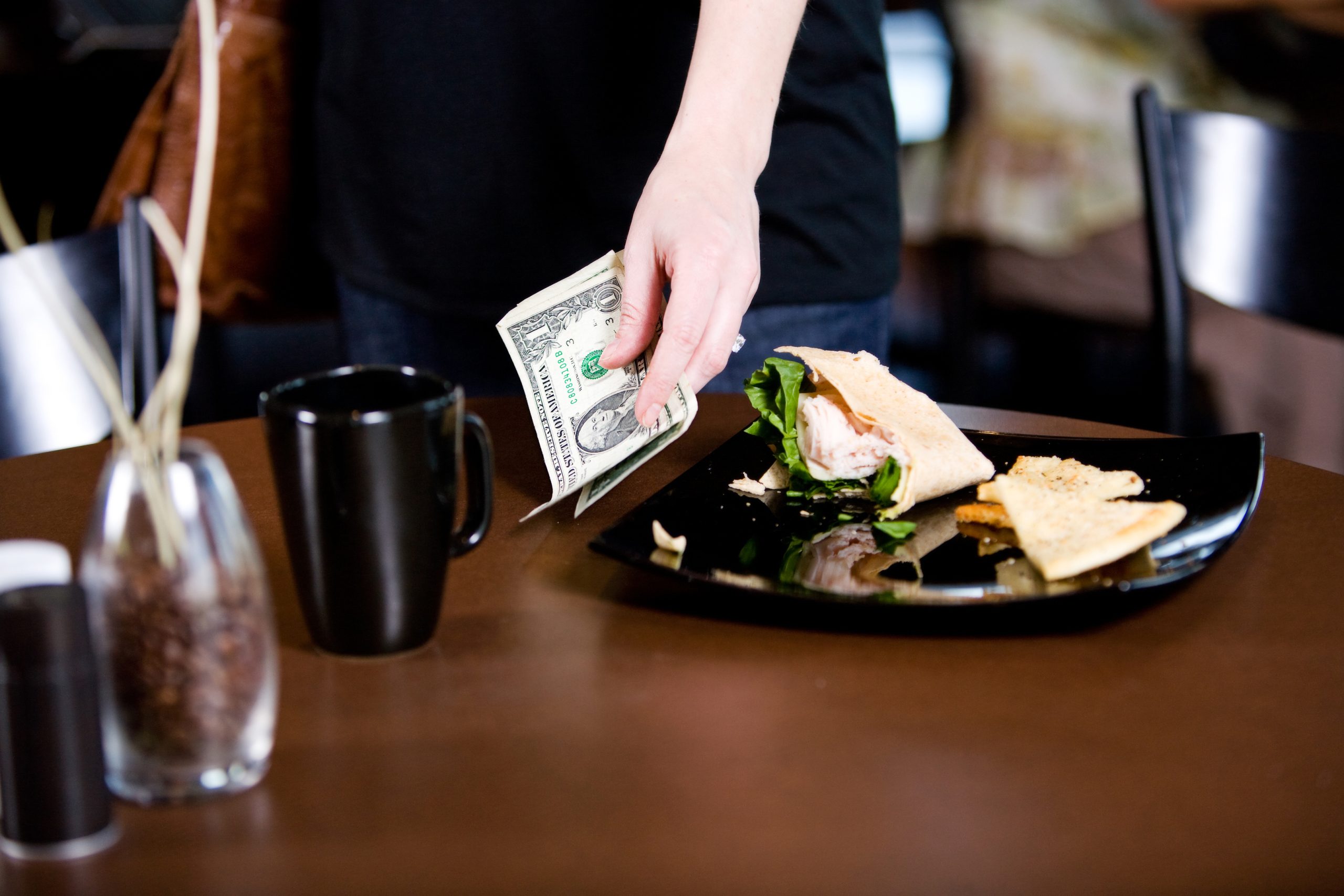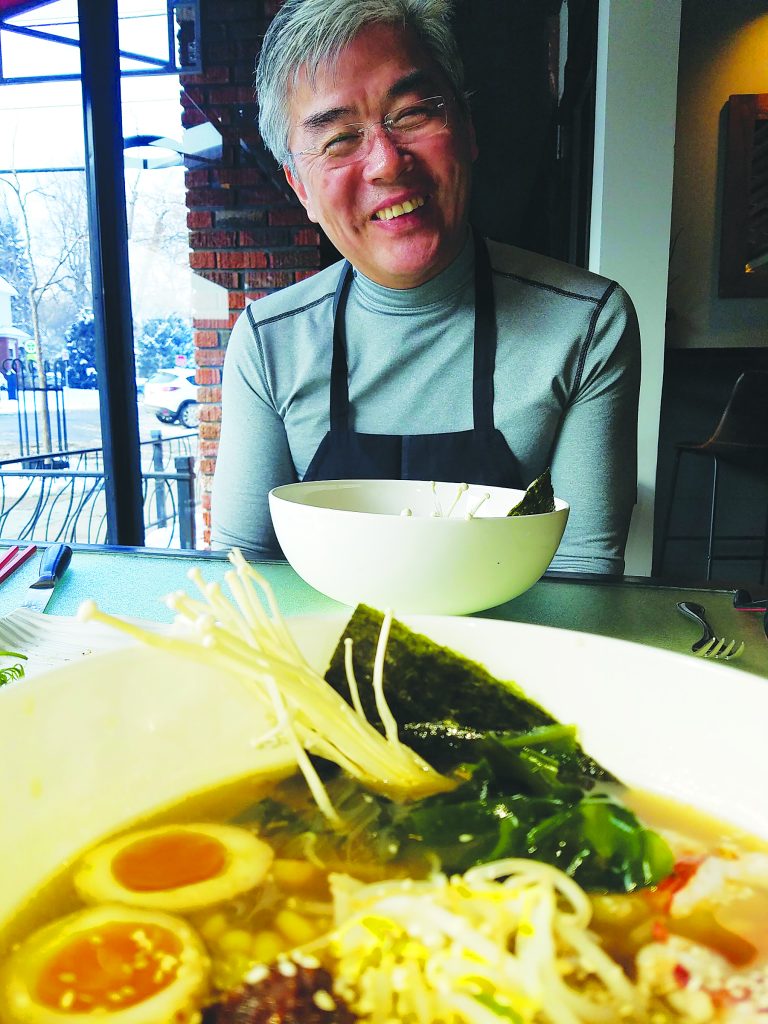
One of life’s most awkward moments gets repeated every week for me. A person stands smiling over me. I gently insert my red debit card into their black device. They turn the screen, and I am face-to-face with the question. Was the service I just received with my omelet worth 15% or 25% of the with-tax total? I must think quickly as they wait for my big-bucks decision.
According to a recent Pew Research Center national survey, 81% of us say we always tip for restaurant meals, but it’s not good news. Only 37% report leaving 15% for a full-service restaurant meal, while 18% say they tip less than that. Fully 2% of those surveyed report that they do not tip at all.
We asked Boulder Weekly readers to weigh in on their feelings about tipping. We were flooded with comments about service fees, tipping for takeout food and the ubiquitous screens with auto tip recommendations. One labeled them simply: “those nasty screens.”

The problem may be what has been called “tipping fatigue.” We are confronted with constant demands for gratuities in almost every retail transaction, from hair salons and dog groomers to electricians and dry cleaners.
“It seems like anytime you pay by debit/credit you get the tip page,” Kay Lyn commented on a Facebook post. “I’ve even had the tip page show up in online purchases.”
In general, our readers say they still tip 15-25% for sit-down meals. They tip less for food delivery and for takeout. Those who have worked in restaurants say they always tip and at a higher percentage.
“I always tip,” wrote local diner Katy Kempe. “In fact, now I am up to 30%. Period. Everyone deserves to earn for their hard work!”
For those who commented, the single biggest quandary seemed to be how much to tip for take-out coffee and food, and even drive-thru fare. One Facebook commenter mentioned “fast-casual restaurants where you aren’t getting any service” and another wondered about bakeries where “all they do is put the croissant in a bag.”
That misperception doesn’t sit well with business owners. Stacy Gustafson, owner of Stacy’s Kitchen in Erie, wrote:
“I tip on anything I get, be it a coffee or fine dining. I hate it when people don’t tip at my shop because it’s a to-go order. It’s all fresh and you watch me make it, for crying out loud!”
Local diner Kerri Hendershot states it simply: “Someone has to put together your to-go order. They run their butts off! Even a couple bucks being tipped is greatly appreciated.”

No tipping allowed
As far as restaurateur Edwin Zoe is concerned, it is time for the practice of tipping to stop in the United States.
“Tipping is an awkward transaction,” Zoe says. “I’ve been trying to tackle it for years. There are friction points in every direction with tipping: between the customer and the server, the server and the restaurant and among employees. The pandemic exacerbated it.”
At his Zoe Ma Ma and Dragonfly Noodle restaurants in Boulder and Denver, tips are not accepted. There is no tip line on the payment screen. If a customer leaves a gratuity, the money is donated to local nonprofit Safehouse Progressive Alliance for Nonviolence.
Zoe is one of only a handful of local restaurateurs who have turned off the tip tap. Other restaurants also include a “living wage” charge on meals, but they also accept tips.
“We were at a popular Boulder restaurant, and our bill ended [up being] 50% more than what we ate and drank because it included our 20% tip and the 30% back of the house fee. Enough!” wrote reader Karyn Sprat. Zoe says that eliminating tipping is the answer.
“There are no encounters where our customer feels like they have been hit up twice,” he says. “For employees, we have decoupled the gratuity from their pay, and they have certainty about their income. It doesn’t depend on how busy we are.”
A reader who has worked in the industry, Tiffany Boller, strongly agrees. “ALL workers should make a livable wage,” she wrote. “We should get rid of this asinine practice.”
Roots in racism
Service fees are supposed to level the income differential between the front of house -— traditionally better paid servers and bartenders, and back of the house cooks and dishwashers.
“It’s not fair for servers to make $30 an hour on a busy night and the dishwashers barely break minimum wage,” Zoe says.
The problem isn’t the customers who tip well, it is the ones who don’t. “Paying your rent shouldn’t depend on their mood,” he says.
Zoe’s turn away from tipping hasn’t been without controversy. To explain his ban, Zoe briefly details to diners the racist history of tipping in the U.S. Tipping is a practice popularized after the Civil War, largely as a technique for paying African American workers less.
“I’ve gotten some love letters from diners,” Zoe says. “One said he didn’t appreciate being called a racist because he wants to reward good service.”
But Zoe has seen racism at work. “Asian, Hispanic and African American servers traditionally tend to get tipped at a lower percentage than those who are not,” he says.

The lust factor has always played a part in tipping, whether we want to admit it or not. We tip attractive servers and bartenders better than waiters who aren’t — even when the latter offer better service.
“I’ve seen it lead to forms of sexual harassment for servers because of this financial transaction,” Zoe says.
Some readers admit that their decision to tip can also be based on some pretty sketchy variables such as not being offered water. We also sometimes “punish” servers for meal issues caused by the kitchen.
We are also sadly easy to manipulate. A new International Journal of Hospitality Management study suggests that restaurant patrons tip a little more if there are smiley face emojis next to the suggested tips on screens.
Anti-tipping tipster
Ultimately, paying workers a living wage has gotten more challenging, according to Zoe. He worries about how to care for workers without raising the cost of a bowl of noodles or a burger “beyond what diners are willing to pay” and still ensure the gracious, attentive and memorable table service that we all love.
“The price I pay for food and everything else has also gone through the roof,” Zoe says. “It is making it much harder for restaurants to make it.”
Even though Zoe doesn’t allow tipping in his Boulder and Denver eateries, he still tips when his family goes out.
“I’m opposed to tipping,” he says, “but you don’t want to punish workers still in that system.”
I recently asked my young server at a Boulder breakfast and lunch spot how well her customers were tipping these days.
“It probably averages 15-20%,” she said. “Some people are more generous. They make up for the people who leave a quarter. I want to say: ‘Don’t spend it all in one place, buddy!’”
I tipped 20% when she offered the screen. I didn’t want her to think I was cheap. Besides, the math was easy.
